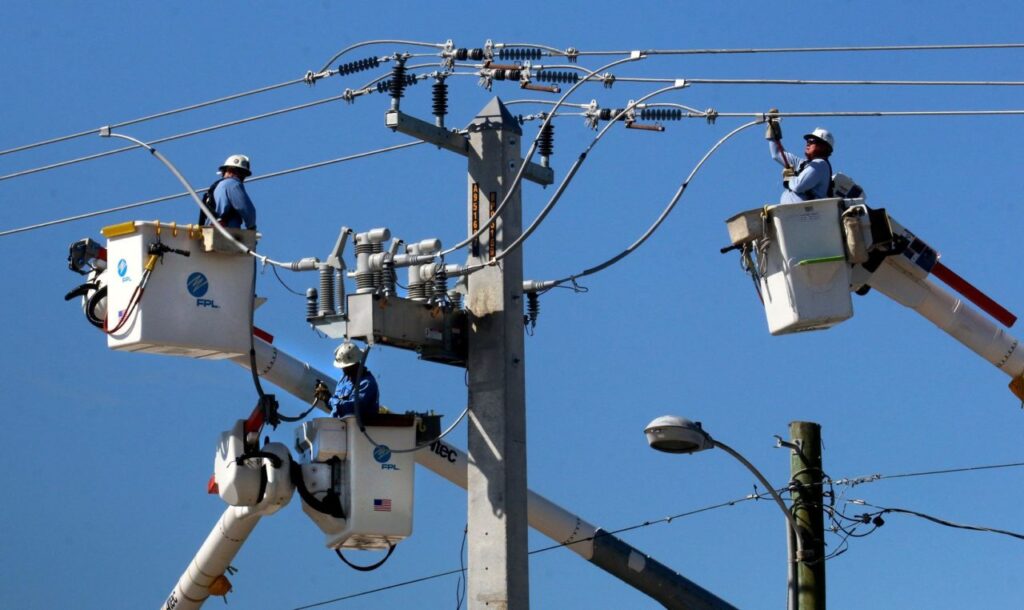A grid-tied home solar system is one that remains connected to the electrical grid. Such a system generates power for the home and it feeds any excess power it generates into the grid. The amount of power it feeds into the grid can slow down the home’s electric meter as it measures usage. It can often make the meter go backward. When the meter “spins backward” it means that electricity is being fed into the grid. The homeowner is given a credit towards their bill by the utility company for the value of the power they provided to the electrical grid. Grid-tied solar is currently the most popular type of home solar power system on the market.
Medición neta: Cómo un sistema solar conectado a la red genera beneficios para los propietarios de viviendas
Grid-tied home solar panel systems are designed to produce more power than the home uses during the day. The excess power is fed into the grid. That excess power actually causes the homeowner’s meter to spin backward. Should the meter spin farther backward during a month than it spins forward, the homeowner receives a credit on their bill. That credit can go toward a future bill. Or at the end of the year, it will be paid to the homeowner by the utility company. Homeowners come out way ahead in the deal. They typically enjoy 15 or more years of profits after breaking even on their solar power system.
La energía solar conectada a la red tiene un rápido retorno de la inversión
The main advantage of a grid-tied solar system is that it has a shorter payback compared to the lifespan of an off-grid system. The average homeowner can expect to break even for the cost of a solar power system in about 8 – 10 years. The average lifespan of a solar panel system is greater than 25 years. This means that most homeowners can look forward to 15 or more years of earnings after breaking even on their investment.
Grid-tied solar is reliable; it requires very little maintenance. Adding grid-tied solar to a home is one of the best home investments you can make. Based on 2017 electric rates reported by the US Energy Information Administration, a homeowner in California who installs a 6-kilowatt solar system that cost $13,566 would save $29,424 over a 20-year period. Those savings are based on the average household’s electricity usage. This makes grid-tied solar a great investment.
¿Funcionan los sistemas solares conectados a la red con el almacenamiento en baterías?
Batteries sold for powering a home don’t store enough power to run the home unless you invest in a huge number of batteries. Instead, a smaller array of home batteries are used to power the home during peak electric rates in areas that have Time-of-Use (ToU) billing. ToU billing charges more for electricity consumed during peak hours, such as 4 PM to 9 PM. Reduced rates are charged for electricity consumed during off-peak hours, such as 12 AM to 8 AM.
Las baterías aumentan considerablemente el coste del sistema. Por ello, los sistemas solares con baterías siguen siendo poco frecuentes. Por lo tanto, muchos propietarios de viviendas consideran que prescindir de las baterías es la mejor manera de rentabilizar la inversión. La excepción son los propietarios que tienen que hacer frente a las altas tarifas TOU por la noche.
¿Cómo se instala la energía solar conectada a la red eléctrica en una casa?
Su mejor opción es acudir a una empresa de instalación solar residencial. Un sistema solar debe ser diseñado a medida para adaptarse a las necesidades y a la luz solar disponible en su casa. Un instalador profesional sabrá cosas en las que la mayoría de los propietarios no han pensado. ¿Está usted en una zona con facturación ToU? ¿O en qué dirección deben estar orientados sus paneles para obtener un mayor rendimiento de la inversión? Los clientes con tarifas nocturnas altas deben orientar sus paneles hacia el sur/suroeste. Al orientar el sistema hacia el sur/suroeste, el propietario recibe el pago de las tarifas eléctricas máximas en lugar de pagar las tarifas eléctricas máximas.

